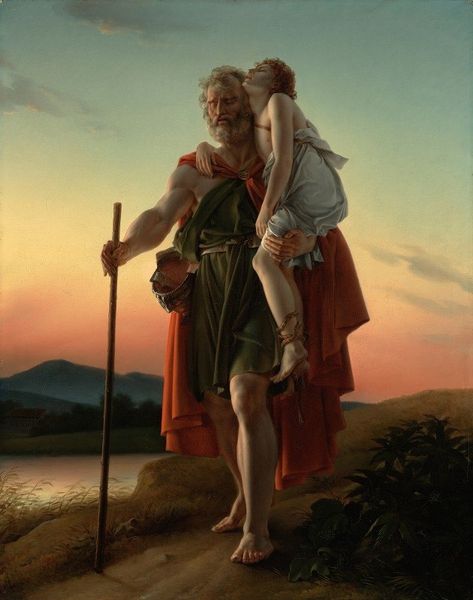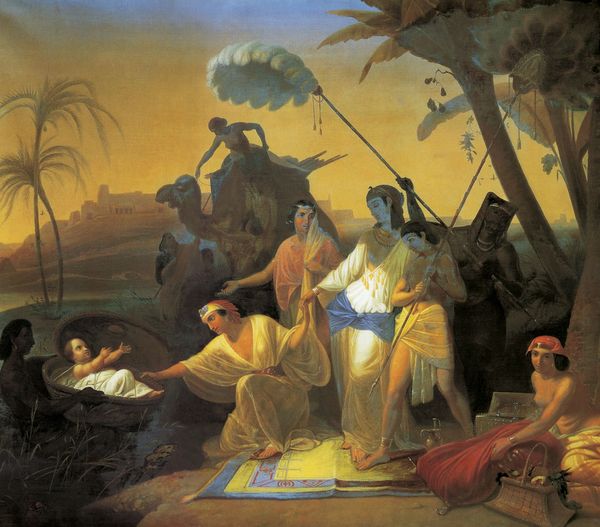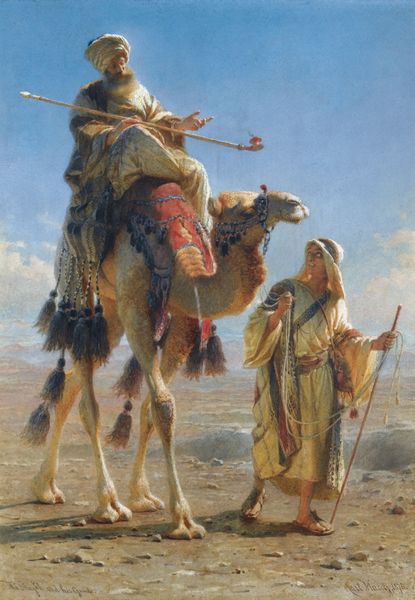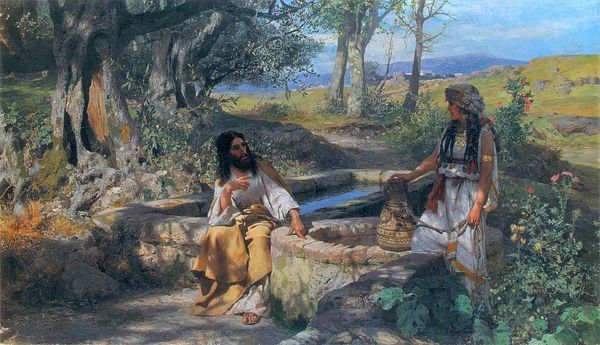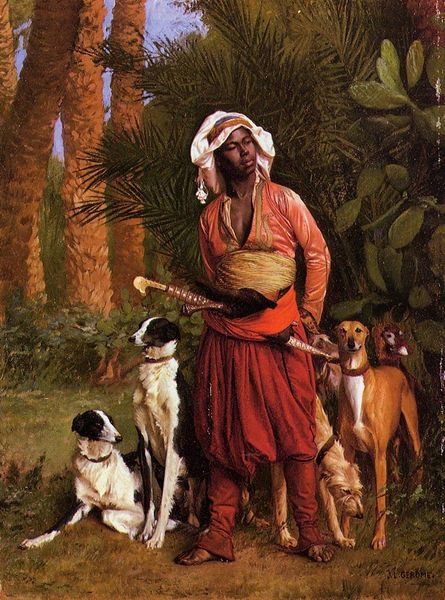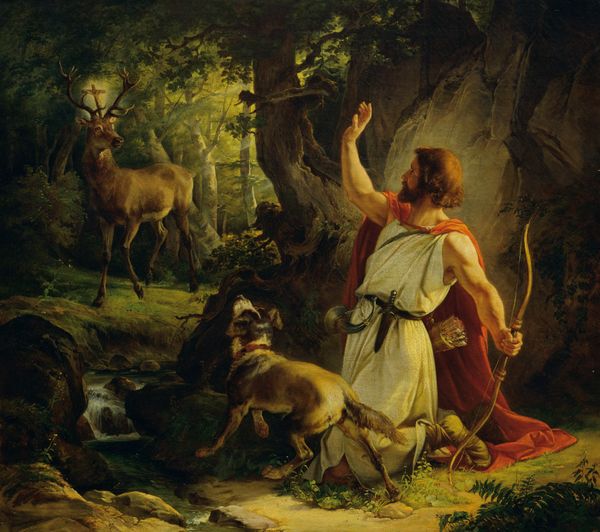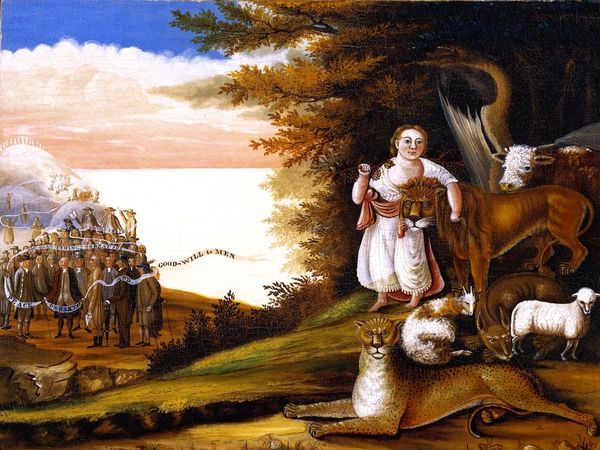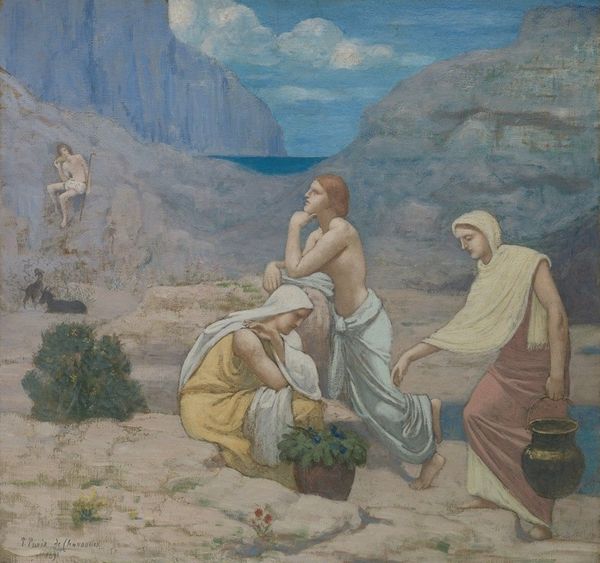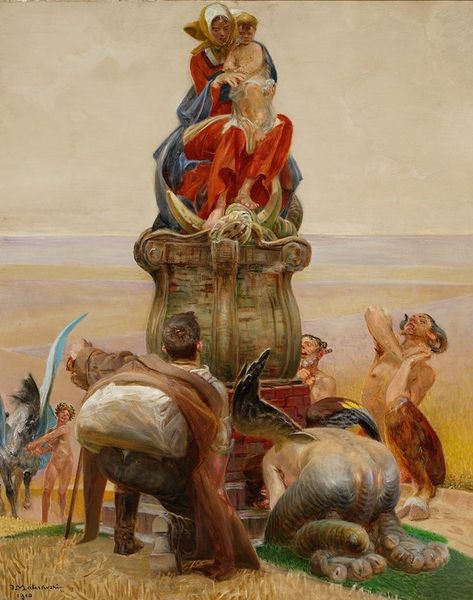
painting, oil-paint
#
narrative-art
#
painting
#
oil-paint
#
landscape
#
figuration
#
oil painting
#
romanticism
#
history-painting
Copyright: Public Domain: Artvee
Curator: Judah and Tamar, painted in 1840 by Horace Vernet. Oil on canvas, as we see here. I notice the distinct costumes and props and wonder about the way those were made, who made them, and the whole commercial enterprise of Romantic orientalist painting. What do you see in it? Editor: I am drawn to the central figures and their clothing. The whiteness of Tamar’s garment sharply contrasts with Judah's more colorful, draped attire. Can we consider the textiles' role in conveying a specific narrative, a coded visual language if you will, accessible to audiences of the time? Curator: Absolutely. Think about where Vernet would have sourced his information and materials. The very pigments in these oil paints were part of a global market and material exchange! And then how are these materials displayed and circulated? This work engages a Western audience, which must be taken into consideration. What kind of labor practices do you think may have helped with the creation and selling of a piece like this one? Editor: Well, first, the labor involved in creating the paint itself, from sourcing pigments to the work of Vernet and his studio. Then there are those responsible for the canvas. Curator: Right, exactly. And think about the distribution networks involved. The reproduction and consumption of images of the “Orient” by a burgeoning middle class hungry for exoticism. It wasn’t just the elite acquiring these works; it was a whole market being cultivated. How does that make you think about the painting? Editor: It does change my perspective. Initially, I saw it primarily as a romanticized depiction of a biblical story, but framing it through a materialist lens exposes the web of production, labor, and consumption that shaped both its creation and reception. Thank you. Curator: Indeed, seeing it this way helps understand the art not only as a thing of beauty, but as a cultural object deeply embedded in the socio-economic context of its time.
Comments
No comments
Be the first to comment and join the conversation on the ultimate creative platform.

